Earlier posts: 1. Introduction; 2. Sungei Buloh; 3. Kranji Heronry; 4. Khatib Bongsu; 5. Senoko; 6. Marina South; 7. Punggol Grassland.
The Lower Peirce golf course controversy erupted at a time when we had cut off ties with the Malayan Nature Society. We were then a newly formed Nature Society (Singapore). This move was crucial as otherwise there would be insinuations that we were taking orders from a foreign government. This was also at a time when we had Prof. Tommy Koh, Singapore’s Ambassador-at-Large, as Patron of the society.
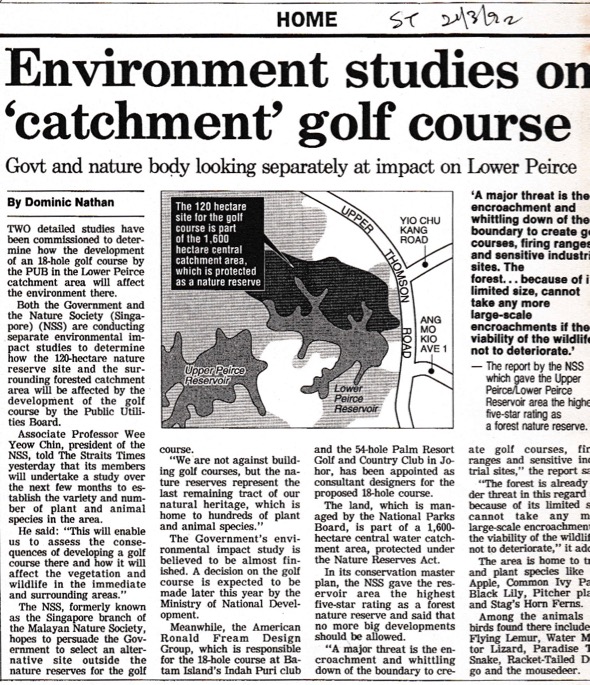
The announcement came in 1992 that government planned to excise a large track of old secondary forest at Lower Peirce Reservoir for a golf course (above). The forest was more than 80 years old then. Furthermore it was legally protected under The National Parks Act 1990.
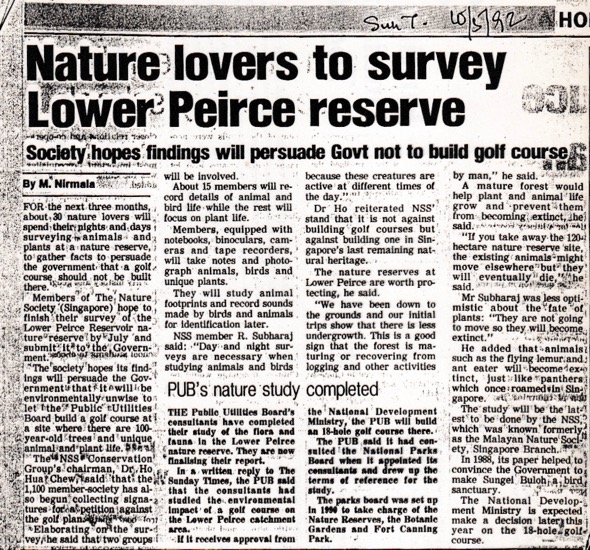
As Founding President of the Newly formed Nature Society (Singapore), I requested the Chairman of the Conservation Committee Dr Ho Hua Chew to take up the cause. He declined. As a diehard birdwatcher he was probably interested in areas where the birdlife was visually as well as audibly obvious – like Kranji Heronry; Sungei Buloh or Khatib Bongsu. Lower Peirce, being a mature forest, the birdlife was less visible and less audible, due mainly to the closed nature of the habitat – the birds were mainly found below the closed canopy. And even when you are inside the forest, you need quiet and patience to spot birds. In open habitats you hear the birds before you see them.
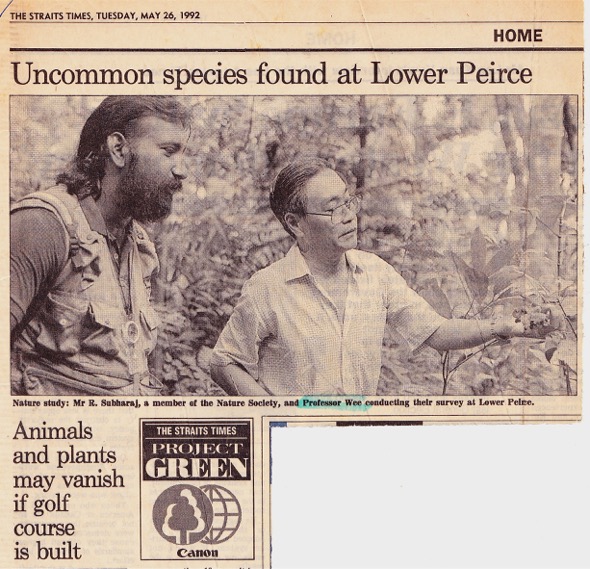
We consulted our Patron who suggested that a detailed report be prepared. Together with experienced birdwatcher Subaraj Rajathurai, we recruited members to undertake a survey.
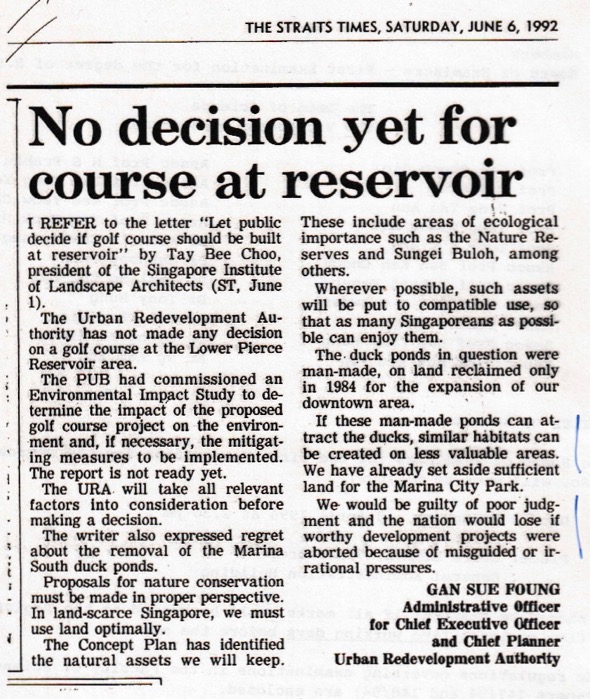
An “Environmental Impact Assessment” was completed in August 1992 and sent to the political leadership (below). Tommy Koh added a forward and signed off as Chairman, Preparatory and Main Committees, United Nations Conference of Environment and Development (UNCED).

We also had strong support from the public as well as from a number of NGOs who wrote letters to The Straits Times. There was also a spontaneous signature campaign that collected more than 25,000 signatures, a campaign that was organised without the knowledge of the President.
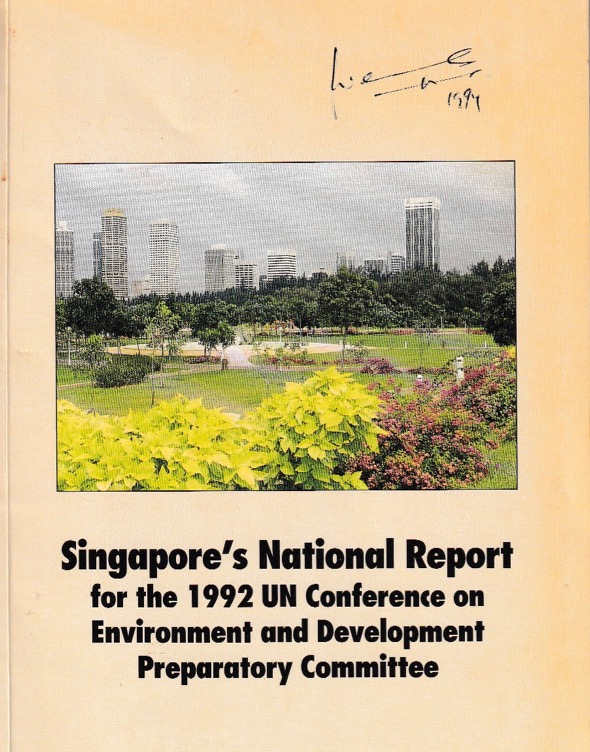
It was a fortunate coincidence that the UNCED or Earth Summit as it was called, was then scheduled in Rio de Janeiro where our Patron was closely involved. This obviously played a major role in government’s decision not to proceed with the project. Added to this was Singapore’s official report to the Preparatory Committee that specifically stated: “The existing 2,079 hectares of nature reserves will be preserved.”

Government eventually decided not to go ahead with the golf course proposal, saving the 123.8 hectares of old secondary forest intact.
The Nature Society can be proud of this success in persuading government not to clear a piece of protected forest for a golf course. This complements the society’s earlier success, that of persuading government to set aside an area for a bird sanctuary in Sungei Buloh. Until today these are the only two successes the society can be proud of.
YC Wee
Singapore
2nd April 2017
Secretary, Malayan Nature Society (Singapore Branch) 1978-1990
Founding President, Nature Society (Singapore) 1990-1995
References:
1. Anon. (1991). Singapore’s National Report for the 1992 UN Conference on Environment and Development Preparatory Committee. Singapore: Inter-Ministry Committee for the UNCED Preparatory Committee.
2. Francesch-Huidobro M (2006). Statutory Bodies, Land Use Planning and Conservation in Singapore: Issues and Challenges for Governability 6(3): 277-288.
3. Francesch-Huidobro M (2008). Governance, Politics and the Environment: A Singapore Study. Singapore: Institute of Southeast Asian Studies.
4. Wee Y C (1992). Proposed golf course at Lower Peirce Reservoir – An environmental impact assessment. Singapore: Nature Society (Singapore Branch).
5. Wee, Y C and R Hale (2008). The Nature Society (Singapore) and the struggle to conserve Singapore’s natural areas. Nature in Singapore 1: 41-49.








